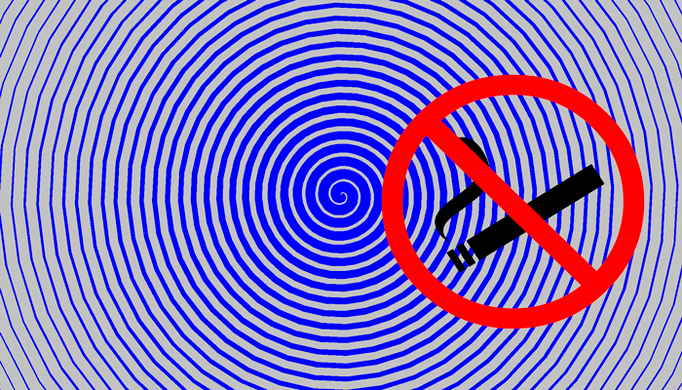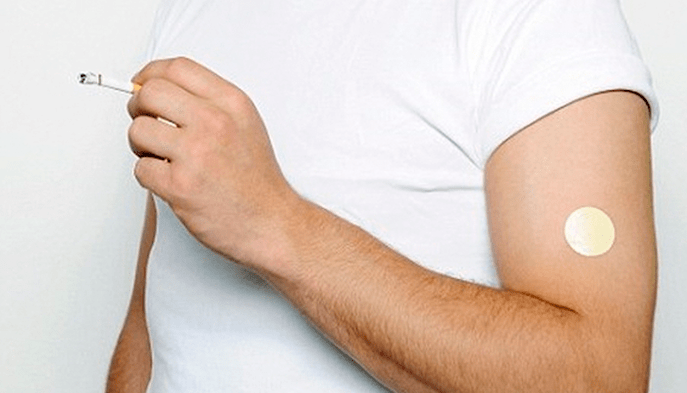It's no secret that bad habits bring no health benefits, only harm. Smoking is wrongly considered the least dangerous habit, but it's not.
After all, tobacco smoke definitely has adverse effects on all systems and organs of the body. Of course, men's health can also be disturbed. How does smoking affect male potency? This article will answer this question.
Effects of tobacco smoke on blood vessels
Smoking and potency are incompatible things. This is due to damage to blood circulation, including in the genitals.
Oxygen is the most important part of the life activity of every cell in the human body. Red blood cells are responsible for transporting oxygen.
Therefore, during each breath in the lungs, the red blood cells circulating in the lungs are saturated with oxygen molecules.
With the next heartbeat, saturated red blood cells are sent to the systemic circulation and carry oxygen throughout the body through arterial blood flow.
After the blood cells (red blood cells) release oxygen, they absorb carbon dioxide from the cells and return to the heart with venous currents.
Again, red blood cells are redirected into the small (pulmonary) circulation and released in the lungs from carbon dioxide, which is excreted with exhalation.
The same process happens when you smoke, but instead of oxygen, red blood cells carry tobacco smoke molecules rich in substances that are harmful to the body:
- carbon monoxide;
- acetaldehyde;
- nicotine;
- Hydrazine;
- ammonia;
- benzene;
- acetone;
- Nitrogen oxides;
- formaldehyde;
- acrolein;
- 2-Nitropropane;
- Hydrogen cyanide and approximately 4, 700 other chemically toxic compounds in varying proportions.
Nicotine is a substance that causes addiction and develops dependence on smoking.
Tobacco toxins can also affect the circulatory system.
Therefore, smoking products can affect the deposition of cholesterol in blood vessels, causing increased blood density, i. e. the risk of thrombosis.
Smoking severely constricts blood vessels, which reduces blood flow to small blood vessels and capillaries throughout the body.
These processes affect the entire body and are responsible for the development of such diseases and pathologies:
- Brain (smoking can cause headaches, irritability, insomnia, brain cancer, stroke);
- Gastrointestinal tract (impaired digestive function, loss of appetite, severe intestinal diseases - diarrhea, gastritis, peptic ulcer);
- Vision (impaired vision, amblyopia (tobacco), cataracts);
- It affects the acuity of hearing - hearing loss;
- teeth (macular, tooth loss, gum disease);
- yellow nail plate;
- skin (dark circles, light gray complexion, early wrinkles, skin hyperpigmentation);
- Cardiovascular system (hypertension, ischemia, heart attack, severe damage and thinning of blood vessel walls, edema, varicose veins, gangrene);
- The combination of smoking and potency manifests in pathological processes such as impotence and poor sperm motility. In women, pregnancy pathology, fetal development, childbirth activity.
After reviewing this list, you should consider whether the cigarette is worth the risk of having such consequences.
How does smoking affect potency?
Does smoking affect potency? Impotence in smokers is closely related to damage to the blood vessels that supply the penis with blood.
Furthermore, a process of worsening vascular status was observed even in novice smokers and passive smokers (often in smoke-filled rooms).
In addition, compression of the endocrine system can affect the health of men. During a poisoning episode (smoking), the body goes into emergency mode.
The functions of endocrine glands are redirected to protect the body's immune system and other systems. But the production of testosterone (the secret of prostate production) has been lacking in energy and power.
The effect of smoking on potency depends on the duration and number of cigarettes smoked, but even one cigarette can affect erectile activity and reduce it by 20%. Many times smoking is combined with regular use of alcoholic beverages and daily stress.
Temporary impotence can be attributed to stressful work, overwork, not smoking. Of course, stress and alcoholic beverages can also affect male strength, but smoking isn't the last one. Quitting smoking can restore normal erections over time.
Statistical data
How does smoking affect potency? According to statistics, among 120, 000 middle-aged men (28-52 years old) surveyed, they have temporary or permanent erection problems (impotence). At the same time, only 15% of men (impotence) were aware of the relationship – the potency of smoking and men.
Decreased testosterone levels suppress libido, and "libido" decreases to almost zero. This question should lead one to the idea of finding the cause of the damage to the potency.

One of the main causes of erectile dysfunction is the effects of smoking. Therefore, smoking 1 pack of cigarettes a day can cause impotence in 60% of men.
Smoking and impotence are directly related. And, in addition to erectile function, reproductive function is also disrupted, i. e. smoking reduces sperm quality. According to statistics, 75% of the sperm of men who have smoking experience cannot fertilize a woman's egg.
Tobacco addiction treatment
The negative effects of smoking on male potency make it necessary to take steps to quit smoking and restore erectile function.
In order to break free from nicotine addiction, a smoker with an impressive experience lacks willpower, and withdrawal syndrome manifests as a marked deterioration in health.

The symptoms of nicotine withdrawal are:
- increased appetite;
- irritability;
- inability to concentrate (attention distracted by the thought of a cigarette);
- anxiety;
- not in a good mood.
The treatment of this addiction should employ a comprehensive approach that combines the elimination of both psychological and physical components.
The psychological factors of nicotine addiction are eliminated through hypnotherapy, psychotherapy, reflexology, drugs. During treatment, the craving for smoking decreased.
Reflexology - Acupuncture on active points can boast its popularity and good results.
This approach can significantly reduce dependence and eliminate nicotine withdrawal symptoms.

Tobacco addiction is considered more serious than alcohol or drug addiction. 60% of male smokers need professional help. Only 5% of long-term smokers successfully quit smoking completely without outside help.
It is necessary to diagnose the smoker's health and the severity of nicotine addiction before proceeding with treatment options. The severity of addiction is determined by some psychological tests, such as the Karl Fagerström (Sweden) questionnaire.
The simplified form of the questionnaire consists of three questions:
- How many cigarettes do you smoke a day?
- How long does it take to smoke your first cigarette?
- Have a strong urge to smoke or have withdrawal symptoms?
This data is enough to understand the true state of the person and to choose his treatment.
Most of the time, smokers try to replace smoking breaks with snacks. In this case, you need to monitor your calorie content so you don't gain weight.

It is recommended to eat according to the principle of nutrition alone - small but often.
This way of eating, you can also replace it in time and disappear. Mints and lollipops and nicotine patches are all great help.
in conclusion
Quit bad habits including smoking, the body begins to clear nicotine after two hours, and on day 2-3, tobacco deposits are expelled from the alveoli, and the circulatory system has delivered oxygen to the body, not tobacco combustion products. Cravings for nicotine will subside within a month.
Blood circulation to all organs and systems, including the penis, improves as the structure of the blood vessel walls recovers, which means quitting smoking helps normalize the potency and quality of sperm.
So it's worth forcing yourself to quit this addiction and qualitatively improve your lifestyle.
According to reviews from former smokers, quitting smoking is difficult, but possible. If the smoker does not start smoking again within six months, that time is enough to thoroughly cleanse the body and gradually restore all functional capacity.







































